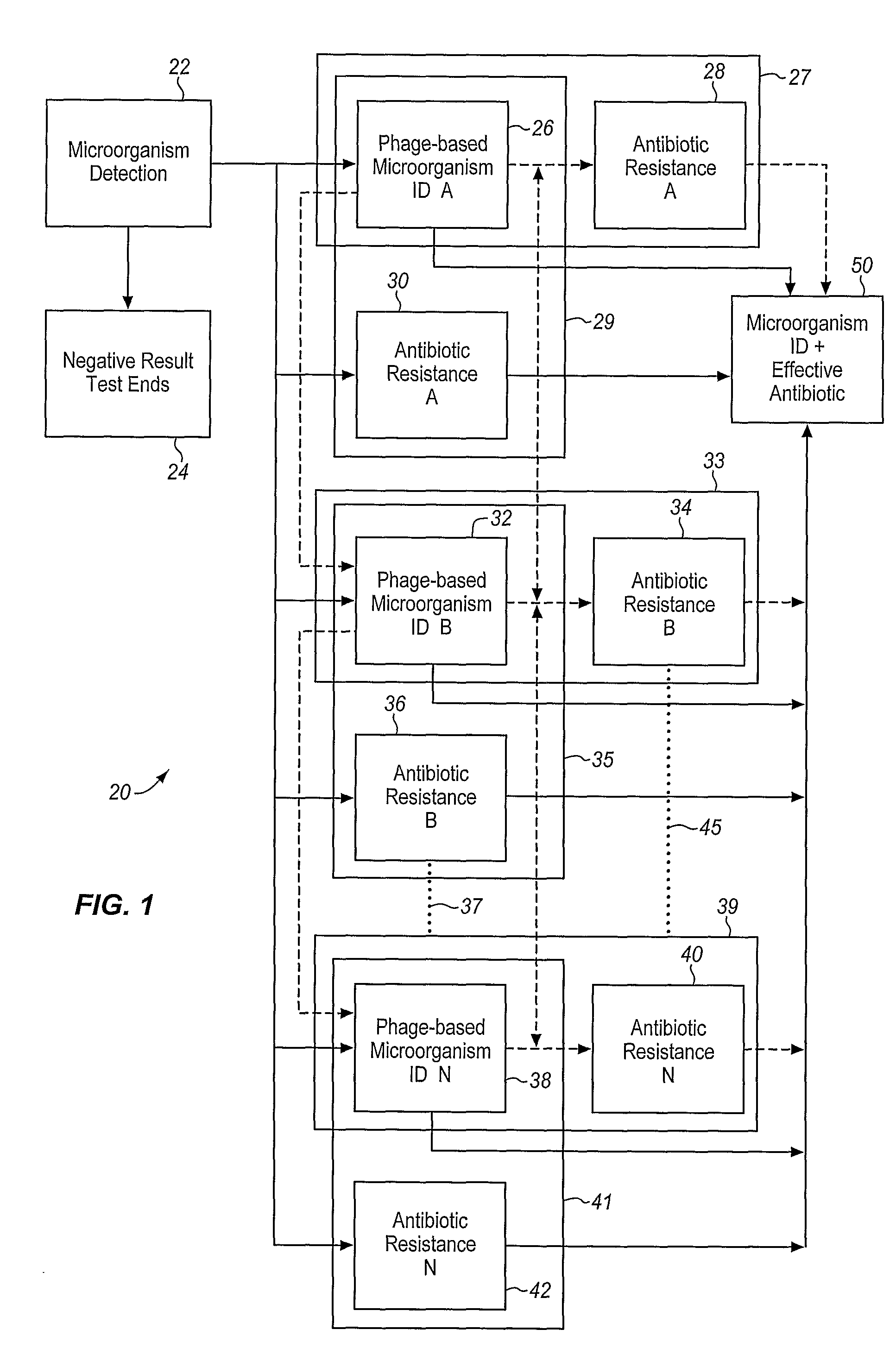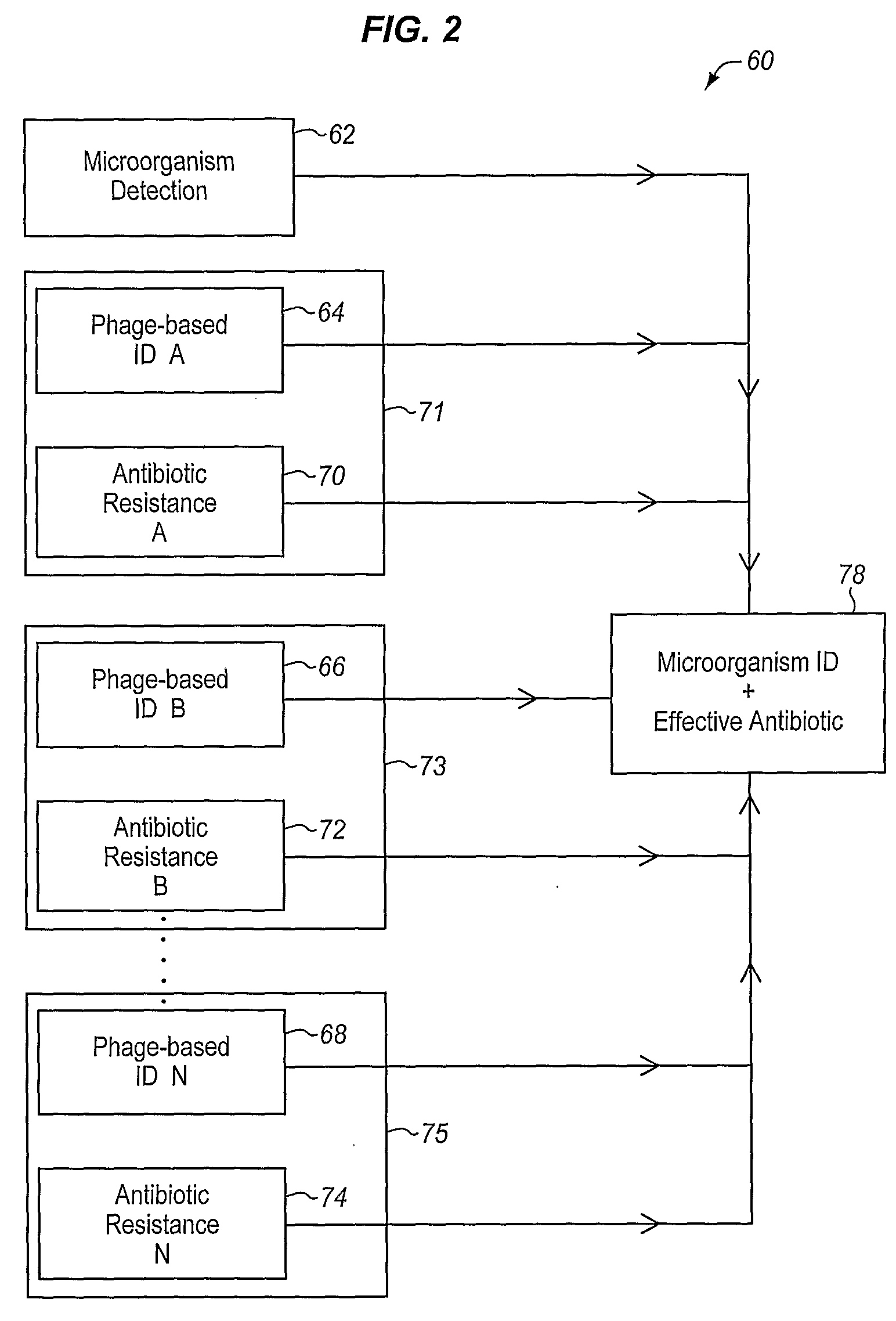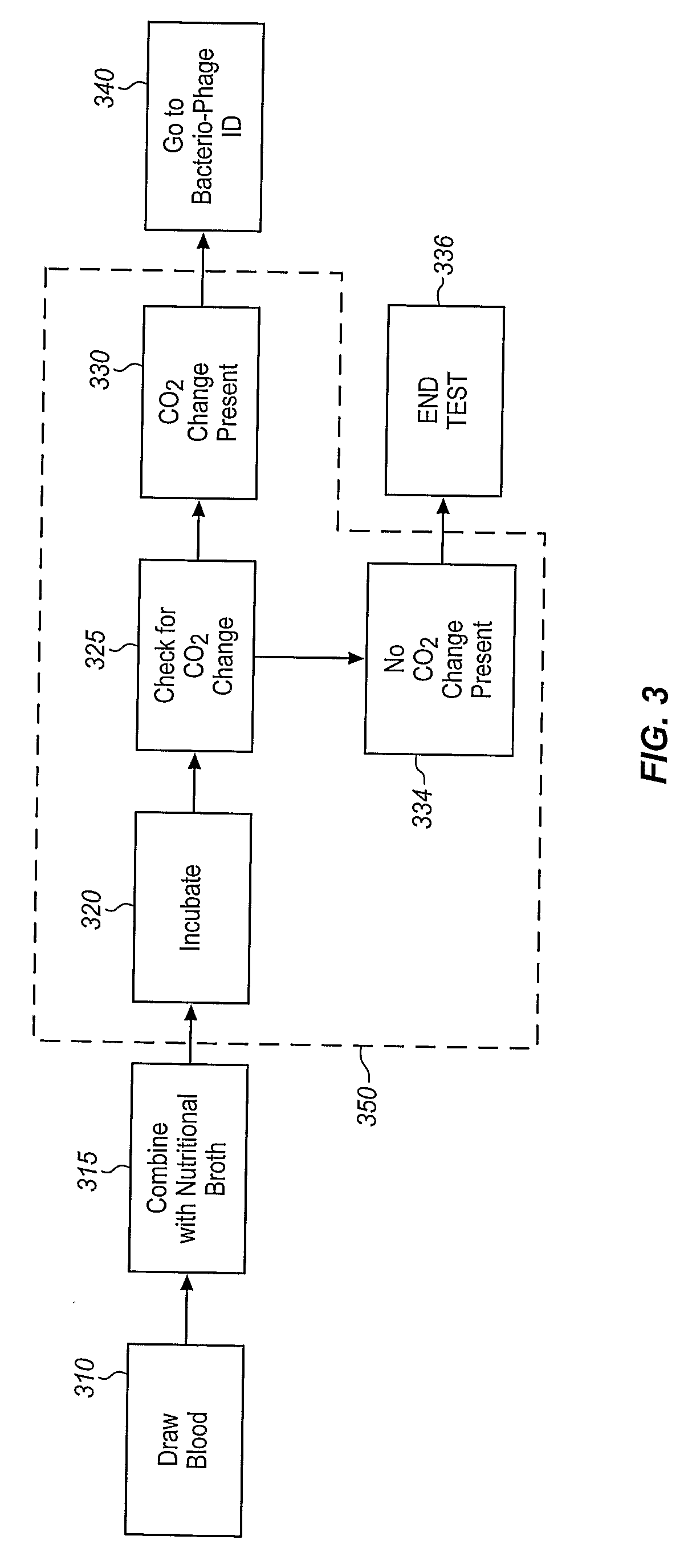Method and Apparatus for Identification of Microorganisms Using Bacteriophage
a technology of bacteriophage and microorganisms, which is applied in the field of identification of microscopic living organisms, can solve the problems of complicating the process of distinguishing progeny bacteriophage, limiting the number of samples on which the bacteriophage process must be performed, and reducing the reliability of the bacteriophage process, so as to reduce the cost of repetitive bacteriophage cycles
- Summary
- Abstract
- Description
- Claims
- Application Information
AI Technical Summary
Benefits of technology
Problems solved by technology
Method used
Image
Examples
Embodiment Construction
[0025]The invention comprises the combination of a microorganism detection apparatus or process with a bacteriophage-based bacteria identification apparatus or process. In this disclosure, “microorganism detection” means that the presence of a microorganism is ascertained without identifying the specific microorganism or microorganisms that are present. “Identification” means that the specific genus, species, or strain of the microorganism is identified. In this disclosure, the terms “bacteriophage” and “phage” include bacteriophage, phage, mycobacteriophage (such as for TB and paraTB), mycophage (such as for fungi), mycoplasma phage or mycoplasmal phage, and any other term that refers to a virus that can invade living bacteria, fungi, mycoplasmas, protozoa, yeasts and other microscopic living organisms and uses them to replicate itself. Here, “microscopic” means that the largest dimension is one millimeter or less. Bacteriophage are viruses that have evolved in nature to use bacter...
PUM
| Property | Measurement | Unit |
|---|---|---|
| Concentration | aaaaa | aaaaa |
| Electrical resistance | aaaaa | aaaaa |
Abstract
Description
Claims
Application Information
 Login to View More
Login to View More - R&D
- Intellectual Property
- Life Sciences
- Materials
- Tech Scout
- Unparalleled Data Quality
- Higher Quality Content
- 60% Fewer Hallucinations
Browse by: Latest US Patents, China's latest patents, Technical Efficacy Thesaurus, Application Domain, Technology Topic, Popular Technical Reports.
© 2025 PatSnap. All rights reserved.Legal|Privacy policy|Modern Slavery Act Transparency Statement|Sitemap|About US| Contact US: help@patsnap.com



